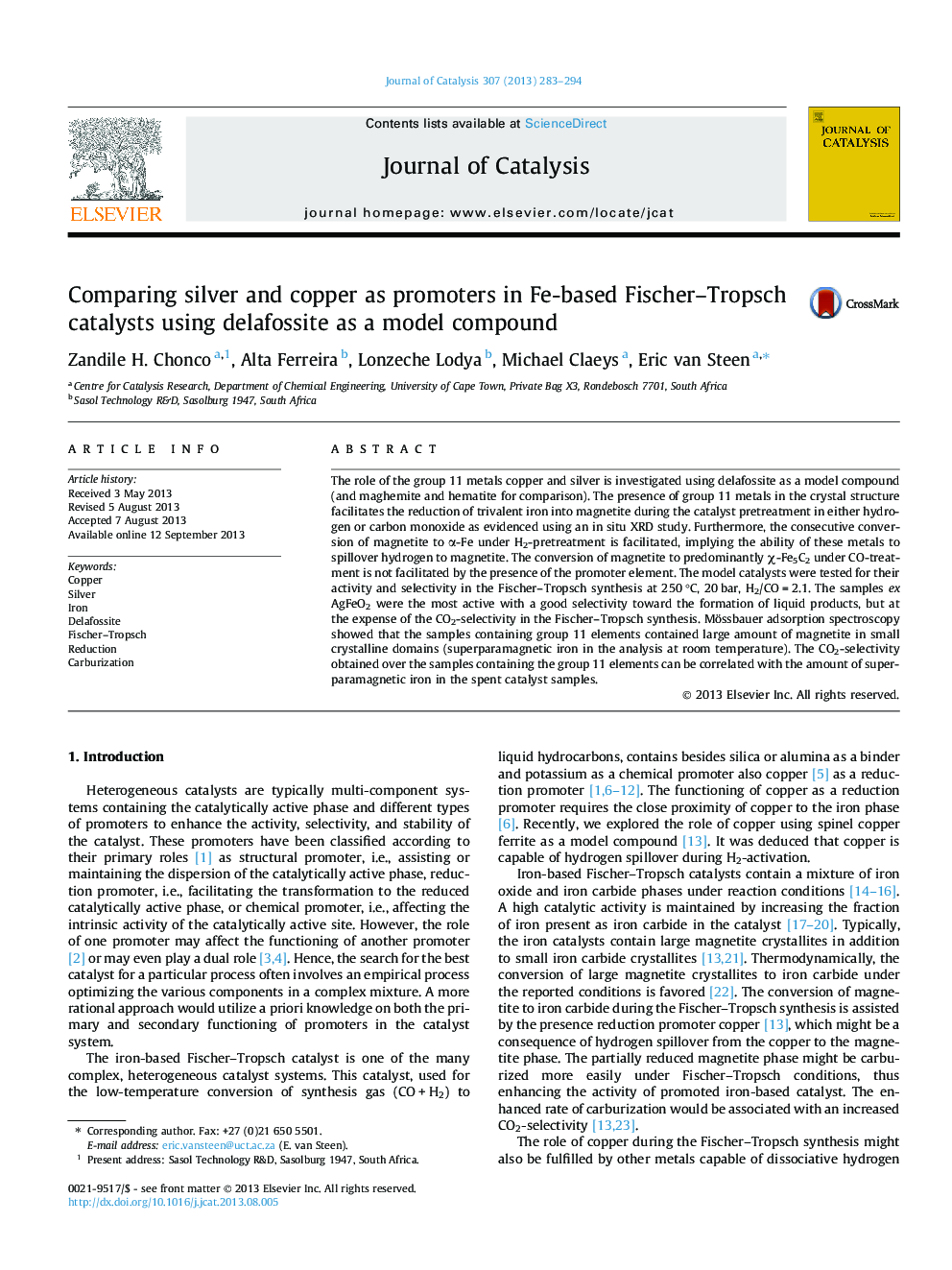| کد مقاله | کد نشریه | سال انتشار | مقاله انگلیسی | نسخه تمام متن |
|---|---|---|---|---|
| 61171 | 47567 | 2013 | 12 صفحه PDF | دانلود رایگان |

• Promotion of group 11 metals investigated using delafossite as model compounds.
• Reductive decomposition of delafossite silver ferrite at lower temperatures compared to delafossite copper ferrite.
• Silver as a promoter in Fe-based catalyst results in higher catalytic activity.
• CO2 formation for samples containing group 11 elements linked to superparamagnetic iron.
• Silver promotion yields a highly olefinic product spectrum.
The role of the group 11 metals copper and silver is investigated using delafossite as a model compound (and maghemite and hematite for comparison). The presence of group 11 metals in the crystal structure facilitates the reduction of trivalent iron into magnetite during the catalyst pretreatment in either hydrogen or carbon monoxide as evidenced using an in situ XRD study. Furthermore, the consecutive conversion of magnetite to α-Fe under H2-pretreatment is facilitated, implying the ability of these metals to spillover hydrogen to magnetite. The conversion of magnetite to predominantly χ-Fe5C2 under CO-treatment is not facilitated by the presence of the promoter element. The model catalysts were tested for their activity and selectivity in the Fischer–Tropsch synthesis at 250 °C, 20 bar, H2/CO = 2.1. The samples ex AgFeO2 were the most active with a good selectivity toward the formation of liquid products, but at the expense of the CO2-selectivity in the Fischer–Tropsch synthesis. Mössbauer adsorption spectroscopy showed that the samples containing group 11 elements contained large amount of magnetite in small crystalline domains (superparamagnetic iron in the analysis at room temperature). The CO2-selectivity obtained over the samples containing the group 11 elements can be correlated with the amount of superparamagnetic iron in the spent catalyst samples.
Metals such as copper and silver result in the formation of small magnetite crystallites during the transformation of iron catalyst under reaction conditions, whose presence leads to enhanced CO2 formationFigure optionsDownload high-quality image (148 K)Download as PowerPoint slide
Journal: Journal of Catalysis - Volume 307, November 2013, Pages 283–294